Newsletter: Comparing Acumatica with Other ERP Platforms
Implementing a new ERP system is a big decision and comparing all the different systems will help you find the correct fit for you and your company.
While all the systems have the ability to perform the same basic accounting and business management functions, they are all different from each other.
Here are some of the different ERP systems that are available and their comparison with Acumatica.

Acumatica vs Oracle NetSuite
Both Acumatica and Oracle NetSuite offer cloud-based SaaS ERP applications and integrate ERP, CRM, eCommerce and BI. They also support a variety of vertical industries from retail to distribution to manufacturing. The following image shows a comparison of their functionality.
5 Significant Differentiators
- Full relational database export: Acumatica has a built-in automated backup service as well as a snapshot feature that gives users the ability to have a fully relational copy of their data at any time whereas with Oracle NetSuite users do not have the ability to directly export their data in a relational format which makes it costly and difficult to migrate data.
- Customizations using industry standard tools: Both products are highly configurable but Acumatica is built using industry standard C# and .NET. Whereas Oracle NetSuite uses proprietary development tools which makes it slightly more difficult.
- Upgrade on your schedule: Acumatica provides users the option to upgrade at any time they choose whereas Oracle NetSuite charges for this option and limits users on when they can choose to update their software in order to support their multi-tenant model.
- Multiple deployment options (cloud, on premises, hybrid): Both products are available in the cloud, but Acumatica also supports on premises and hybrid deployments for companies that want to keep sensitive data in-house.
- TCO: Both products charge by computing resources consumed, but Oracle NetSuite also charges per user. So, this increases the total cost of ownership over time as your company grows.

Acumatica vs Oracle NetSuite
Both Acumatica and Oracle NetSuite offer cloud-based SaaS ERP applications and integrate ERP, CRM, eCommerce and BI. They also support a variety of vertical industries from retail to distribution to manufacturing. The following image shows a comparison of their functionality.
4 Significant Differentiators
- True Cloud: “True cloud” means all functionality is accessible through the internet using a standard browser without the need for any additional software installation on the user’s device or additional software licensing. Acumatica works on premises or in the cloud without additional equipment or software. Dynamics SL requires Microsoft SharePoint as a frontend for it to run in the cloud. Currently, the only true cloud option offered by Microsoft for SL users today is to give up SL entirely and reimplement (at significant expense) with Microsoft Dynamics 365 Business Central (formerly Dynamics NAV).
- Multiple deployment options: Technically, both products support cloud, on-premises, and hybrid configurations. However, Acumatica supports all three deployment options natively using a browser to access the system. Dynamics SL, on the other hand, requires SharePoint as a front-end to enable a cloud configuration. In addition, SharePoint requires user licensing, increasing TCO.
- Scale as you grow: When choosing an ERP solution, you must consider not just your company’s current needs, but the future needs as well. Both products allow you to scale resources to support a growing company, but because Acumatica only charges by the computing power required and not by users, you can scale your equipment as you grow, allowing an unlimited number of users to access the system regardless of job function. Dynamics SL, on the other hand, incurs greater costs as your company grows and more employees need access to the system. Be aware of these costs and consider them in your final evaluation.
- TCO: Acumatica charges by computing resources used, not by user. Dynamics SL charges per user, and these costs increase as your company grows. Moreover, Acumatica works natively in the cloud, where Dynamics SL requires a separate license for SharePoint for it to work in the cloud.

Acumatica vs QuickBooks
As a growing company using QuickBooks, you might be finding that it is showing its limitations, and you’re looking for a new solution. QuickBooks by Intuit offers users a good starter accounting package at a good price. However, it is designed to handle basic accounting only. To manage business processes outside of financials requires an Enterprise Resource Planning (ERP) solution, which can handle accounting and financial management needs along with other business requirements, such as manufacturing, distribution, and much more.
As a growing company using QuickBooks, you might be finding that it is showing its limitations, and you’re looking for a new solution. QuickBooks by Intuit offers users a good starter accounting package at a good price. However, it is designed to handle basic accounting only. To manage business processes outside of financials requires an Enterprise Resource Planning (ERP) solution, which can handle accounting and financial management needs along with other business requirements, such as manufacturing, distribution, and much more.
5 Significant Differentiators
- True cloud: Acumatica works on premises or in the cloud without additional equipment or software. QuickBooks Enterprise can be accessed over the internet, but even Intuit acknowledges that QuickBooks has not been optimized to be a true cloud product.
- Full function ERP: Acumatica offers your organization a complete ERP and CRM solution. While QuickBooks Enterprise contains some of these elements, it is ultimately an accounting solution and not a full function ERP solution.
- Full relational database export: QuickBooks uses a proprietary database and does not provide a true export function, requiring a third-party utility to access the underlying database. Most of the next level financial management solutions for small- to mid-sized businesses use more robust databases, such as Microsoft SQL Server, SAP HANA, or Oracle. However, these other solutions also expect the client to eventually move to some kind of ERP solution. QuickBooks is designed strictly for accounting.
- Scale as you grow: Acumatica allows you to scale as your company grows and can accommodate multiple companies and multiple currencies. QuickBooks Enterprise limits you to a maximum of 30 users and handles multiple currencies but not multiple companies.
- TCO: Because both products serve different purposes, it would be difficult to say which one has the best total cost of ownership. We recommend, however, that you apply due diligence when selecting a replacement product for QuickBooks to ensure you get a product that can continue to grow with your company for several years.



